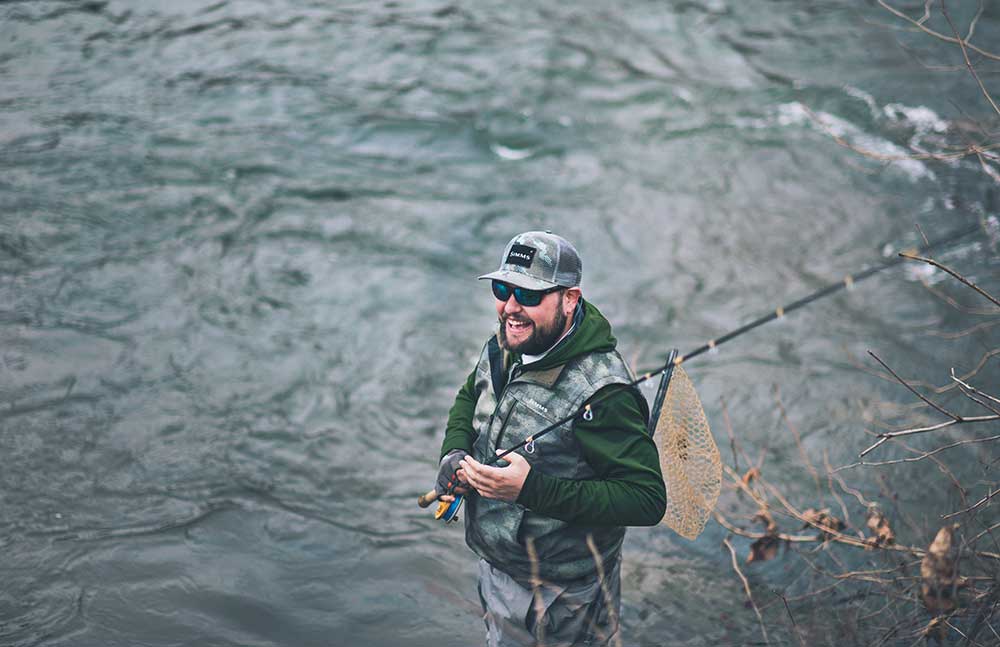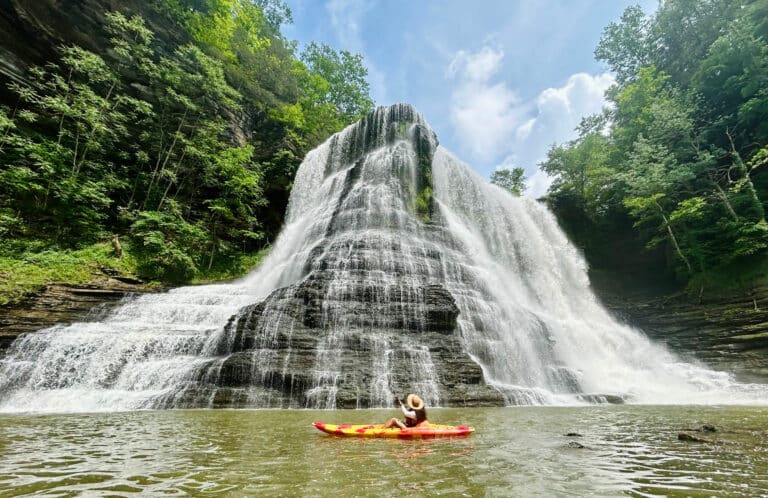From blizzard caddis hatches and spinner falls to the emergence of every mayfly known to the East, this is the time of year to be a dry fly snob.
Sure, 90 percent of a trout’s diet might come from below the surface, but there’s nothing in fishing that satisfies like solving the puzzle during a hatch. In honor of the bugs of spring, BRO tracked down expert anglers and came up with a list of fisheries with some of the best dry fly action in the region. Leave the beadheads at home and pack an economy-sized bottle of Gink, because there’s no need to look below the surface at these places.
Penns Creek, Pennsylvania
No discussion of hatches is complete without mention of Penns Creek, Pennsylvania. This venerable stream is one of the best dry fly fisheries in the country, boasting what may be the most famous green drake hatch in the East.
The focal point of Penns Creek for fly fishers is the stretch of water from Coburn downstream to Glen Iron. There are roughly 20 miles of “Class A Wild Trout Stream,” and much of it is accessible only on foot through central Pennsylvania’s Bald Eagle State Forest. With limestone and freestone influences, Penns Creek supports an incredible amount of insect life. Guide George Costa, with TCO Outdoors, said things pick up in April when blue-winged olives, Hendricksons, and grannoms appear and lead into a riot of bug activity in May.
“Sulphurs, March browns, caddis, blue quill, olives, pretty much everything under the sun is hatching in May,” said Costa. “It can be massive, and all at once.”
These insects are a precursor to the main event, which is 10 days in late May and early June when big meaty green drake mayflies conduct their courtship. The hatches move progressively upstream with warming water temperatures, and big size 8 to 10 patterns match the adult stage of this mayfly.
Of course, all the other bugs will be on the water at the same time, so it’s wise for anglers to keep options open. Costa said the best pattern during a drake hatch is a size 16 sulphur. Penns Creek brown trout seem to prefer the flavor of the smaller pale yellow sulphur mayflies.
Every fish in the river takes part in this annual spring smorgasbord. Brown trout are the dominant species, a few rainbows show up, and native brook trout enter the flow from tributaries. At Penns Creek, there’s a chance to catch tiger trout, which are a brown trout/brook trout crossbreed. Fish size is good, too. Costa said they average 13 to 16 inches, and there’s potential to encounter fish 20 inches and longer.
Adventurous anglers who want to target large fish with dry flies should pack a headlamp. In the final stage of the green drake lifecycle, they molt into big white coffin flies. They lay their eggs and then die en masse, falling to the river in an event known as a spinner fall. Most of the action takes place after dark. The angler listens for fish slurping spinners off the surface and then casts a big size 6 or 8 pattern to the unseen target. The largest fish in the river feed during the spinner fall.
Go Fish: Get on the water with TCO Outdoors; tcoflyfishing.com
Second Creek, West Virginia
In the mountains of rural eastern West Virginia, Second Creek has gained a reputation for large sometimes difficult brown trout. It is a hatchery-supported, spring-fed tributary to the Greenbrier River that runs the Monroe/Greenbrier county line and features a mile and a half regulated for catch-and-release fly fishing only.
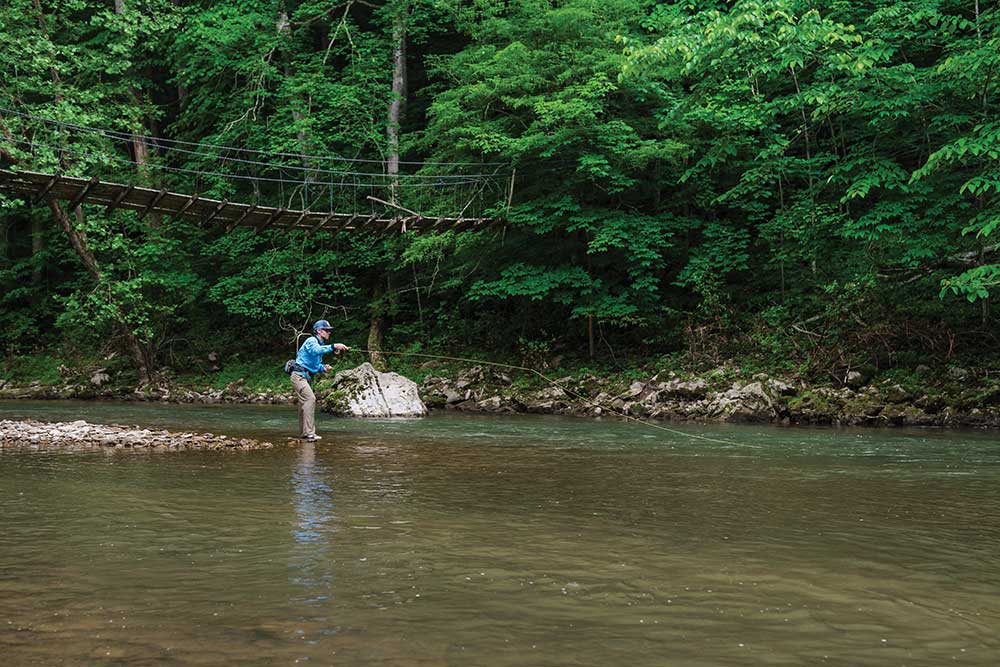
That’s not a whole lot of water to fish, and it does receive pressure, yet the allure of large cagey browns—as well as a few rainbows—rising to dry flies is enough to warrant a trip to this out-of-the-way gem south of Ronceverte.
“That stream is a bug factory, and it’s different day to day and pool to pool,” said Jacob Ott of Otters Guide Service. “If you’re looking to throw dry flies, and if the water conditions are fishable, something will be rising.”
Whether it’s terrestrials like Japanese beetles in summer or tiny midges in winter, bugs bring fish to the surface year-round in clear, mostly shallow water. Black stoneflies, blue-winged olives, sulphurs, March browns, and others will be present in spatterings at different times of year. But the black caddis hatch is a highlight. From roughly April into July, Ott said mid-morning brings them on like clockwork.
“When it hits, it’s on. It’s a full-bore, blizzard caddis hatch,” he explained. “Once it starts, it will happen at pretty much the same time every day until it ends.”
These are small black caddis. Ott throws a simple size 16 or 18 CDC caddis pattern. He’ll hedge his bet by dropping a soft hackle or a Fox’s Pupae—or both—beneath the dry fly.
“You’ve got to be on your A game. It’s smaller, clear water that gets pressure from some good anglers,” Ott warned. “By the end of the season, we’re fishing 7x and 8x tippet and long 12-foot leaders. It’s technical fishing that requires accurate casts, good drifts, and stealthy wading.”
Go Fish: Reach Otters Guide Service at ottersguide.com.
Dry River, Virginia
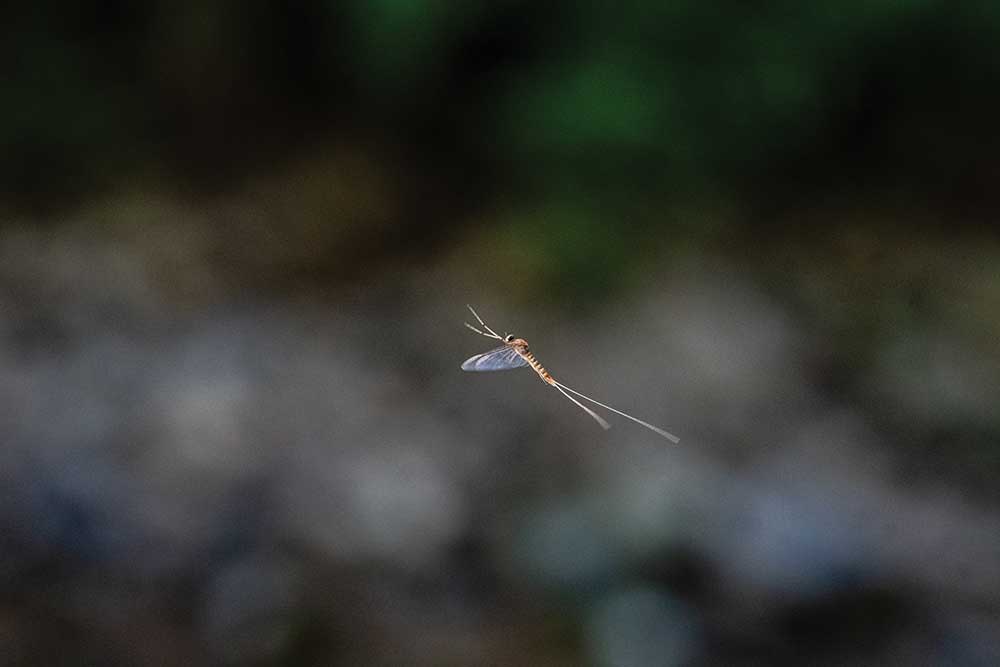
Native brook trout definitely aren’t selective feeders. If it looks buggy, they will eat it. That’s why brookies are so much fun with dry flies, and there may be no better place to drift drys for them than Virginia’s Shenandoah Valley.
A stronghold for our region’s only native salmonid, Shenandoah National Park draws a lot of angler attention. Over on the other side of the valley, a little farther from the big cities, Dry River flies under the radar as one of the best brook trout fisheries in the Mid-Atlantic. It has the highest population density of native brook trout in Virginia.
Owned by the City of Harrisonburg and running through George Washington National Forest, Dry River is a large stream by brook trout standards. It is a wide flat freestone with well over 10 miles of easily accessible water; closer to 20 miles when tributaries like Skidmore Fork and Switzer Lake are thrown in.
“You can catch all you want with a size 16 yellow Stimulator or a size 14 Parachute Adams,” said Colby Trow, co-owner of Mossy Creek Fly Fishing in Harrisonburg. “They’re brookies. If you make a decent presentation, they’re going to eat it.”
Of course, drys work better when there are bugs on the water, and Trow said Dry River offers the standard Shenandoah Valley assortment, with quill Gordons kicking the party off in mid-March. Just ahead of Memorial Day each year, Dry River also hosts one of the best green drake hatches in the state. It lasts about two weeks, and it’s spectacular.
“You’ll see tremendous hatches that blanket the river with bugs the size of hummingbirds,” said Trow.
But don’t worry if you miss it. Through the summer, yellow stoneflies and terrestrials are enough to keep trout looking up, and an attractor pattern is the best brook trout fly, anyway. Trow said to fish bushy Catskill-style flies when the river is high and turbulent and parachutes when the water is low and clear.
Dry River has been fishing really well with the wet weather and high waters of the last few years.
“There have been some good 12 to 13 inchers caught out there,” Trow said. “It’s not just population density, it pumps out some big fish, too.”
Go Fish: For more info contact Mossy Creek Fly Fishing at mossycreekflyfishing.com.
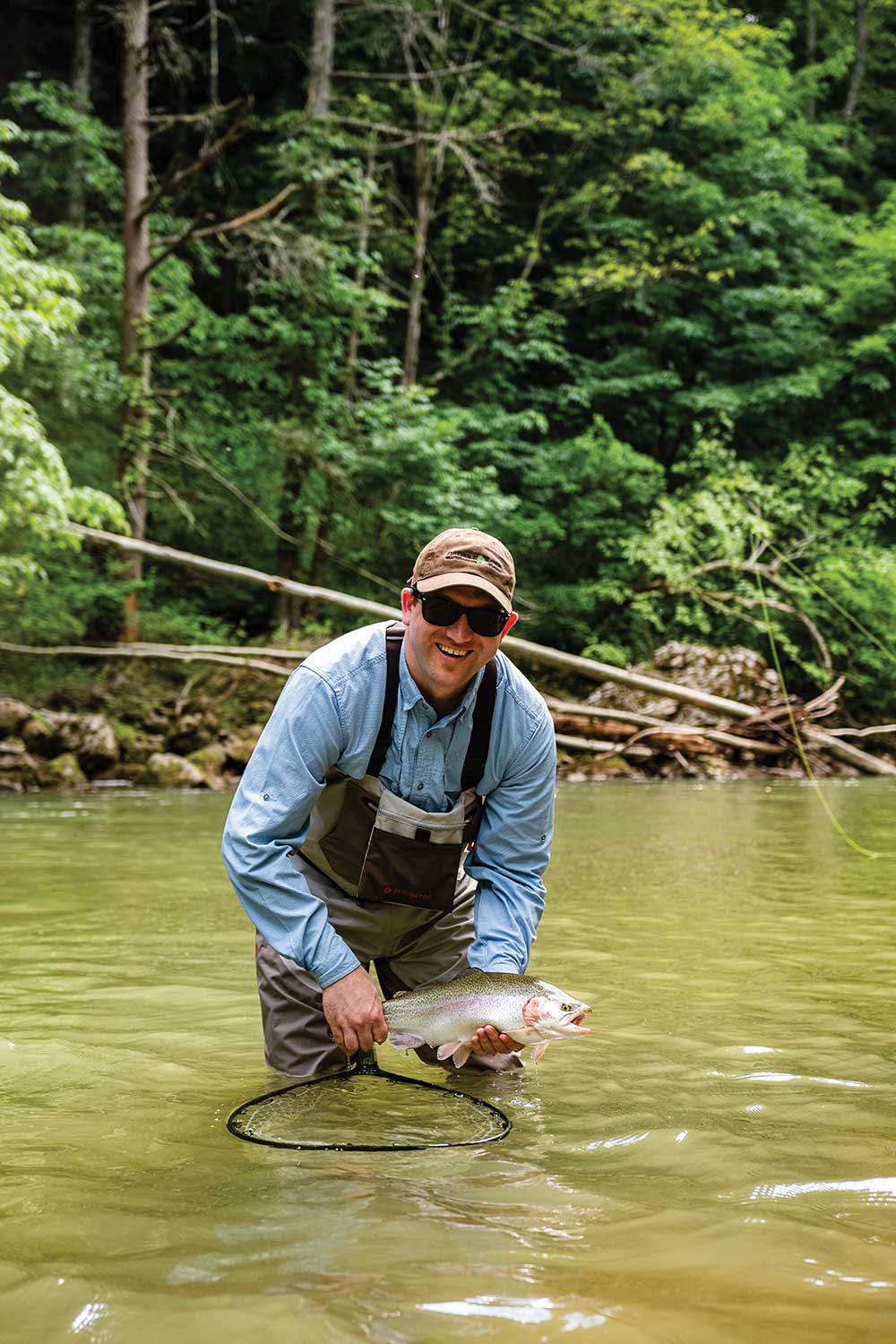
Tuckasegee River, North Carolina
The delayed harvest sections of the Tuckasegee River, at Sylva and Bryson City, N.C., are some of the most famous fisheries in the Southeast. With regular stockings and catch-and-release regulations through the cool months, the Tuck holds incredible numbers of healthy rainbow, brown, and brook trout.
Because it fishes so well, it sees a ton of fishing pressure, but Shannon Messer, of Tuckaseegee Fly Shop, has noticed an interesting pattern from the anglers.
“In April and May, almost every day from about 5 p.m. until dark, fish are rising all over the river. Most people miss the best part of it because they’re off getting a burger and a beer,” he said. “For people who want to experience dry fly fishing and casting to rising fish, that’s the place to be and the time to be there.”
The Tuckasegee is a tailwater, wide and flat, with bedrock ledges and shoals that channel water into obvious holding water. The caddis hatches can be huge, and trout line up in lanes to feed on the surface. Casting to individual rising fish is a challenge dry fly anglers relish on the Tuck.
Early spring brings on enormous black caddis hatches, which give way to tan and then olive caddis as the season progresses. Messer likes a beefy Corn Fed Caddis or a simple Elk Hair Caddis in sizes 12 to 16 to match what he sees on the river. There will also be mayflies and midges mixed in, so a double dry fly rig is a good idea. Try trailing a Blue Dun, size 14 or 16, or a size 18 Griffith’s Gnat behind the caddis.
One thing about having so many bugs on the water is fish become finicky. The trick is to make them choose your fly over all the real ones.
Good presentation is paramount, and Messer recommends long 9- to 12-foot leaders to cut down on micro drag that leads to refusals. Another trick if you notice your caddis being snubbed is to trim the hackle so it floats lower in the water.
Go Fish: Reach out to Tuckaseegee Fly Shop at www.tuckflyshop.com for additional details.
Hiwassee River, Tennessee
Fed through a pipe by cold waters of North Carolina’s Appalachia Lake, the stretch of the Hiwassee River where it rolls into east Tennessee is a fantastic tailwater trout fishery. Centered on the town of Reliance, it is hatchery supported, and holdover fish grow large.
The Hiwassee is known for year-round dry fly fishing, and guide Bill Stranahan, with Southeastern Anglers, said the river was fishing lights out during the October through February catch-and-release season. Midges and blue-winged olives keep the fish looking up in winter, and Stranahan is almost giddy about the insect activity that ramps up in March. First, the grannom caddis show up, and they are followed closely by Hendricksons and a bevy of other mayflies.
“They blend together, and it goes back and forth,” Stranahan said. “It’s not a blanket hatch by any means. You’ll find them all over the river here and there, and you may come into an area where they’re really pouring off.”
All that bug life makes blind drifting dry flies an effective way to prospect, even in stretches where you don’t see fish rising or much bug activity. Stranahan suggested an olive or tan Elk Hair Caddis, in size 14 or 16, with some sort of mayfly trailed behind it. The Hiwassee sees both light and dark Hendricksons, matched with size 14 or 16, so parachute and dun patterns of either are a good choice. But sometimes the fish will key on blue-winged olives. A bushy caddis is a great lead fly to help you stay in visual contact with a tiny BWO pattern.
These mixed hatches are best during the warm afternoons of spring and will carry on into early summer. The Hiwassee’s headliner hatches occur in July, when Isonychia Bicolor mayflies show up in heavy spurts. These slate drakes are big, size 8 to 12, and provide good action on big attractor patterns all summer long.
Go Fish: For more info contact Southeastern Anglers at southeasternanglers.com.
Nick Carter is the author of “Flyfisher’s Guide to North Carolina & Georgia.” The guide is available on Amazon.com, and autographed copies are available by emailing the author at [email protected].
